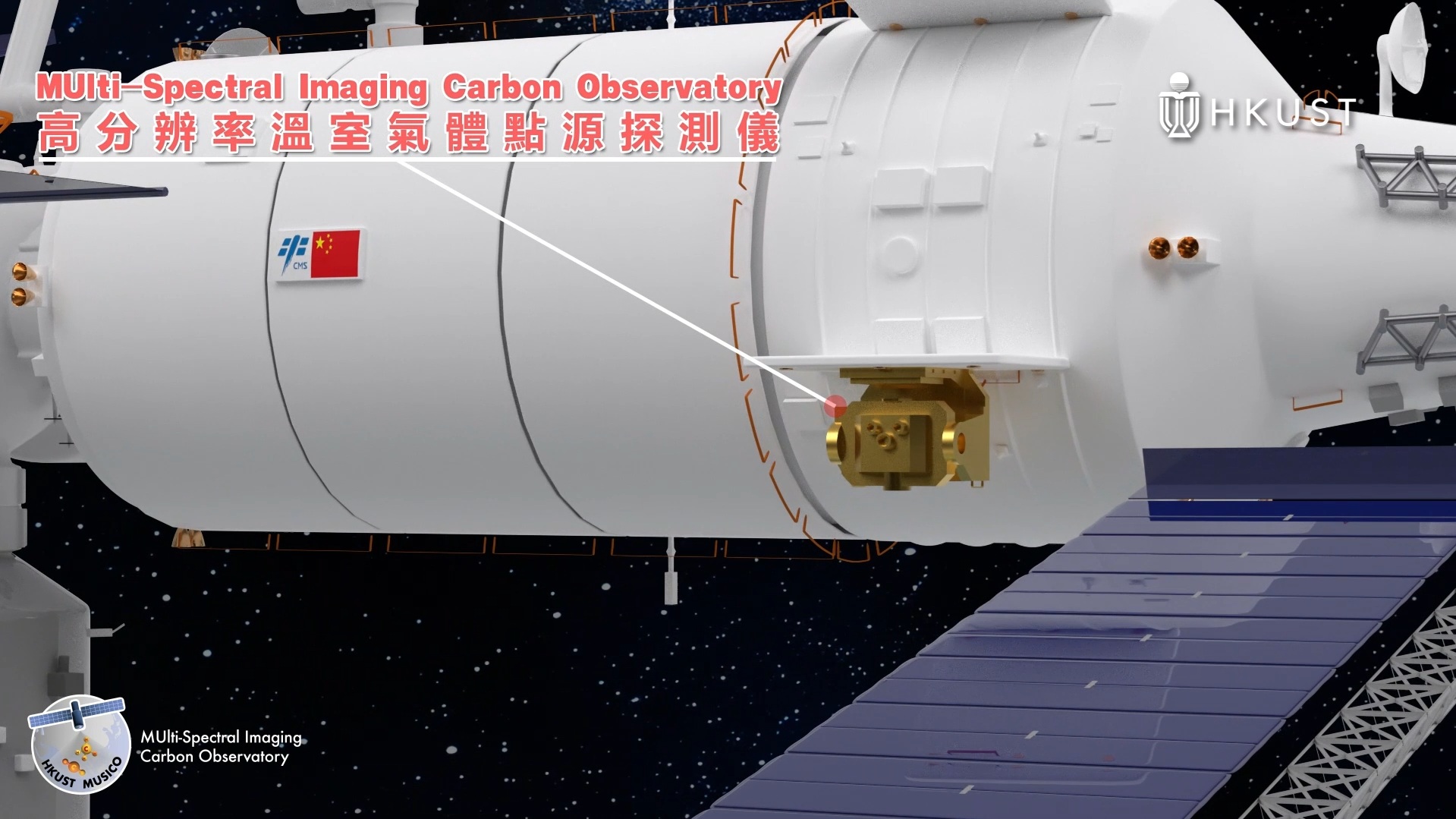
Hong Kong scientists on Thursday unveiled the world’s first spaceborne instrument capable of simultaneously providing real-time monitoring of both carbon dioxide and methane emissions — two major greenhouse gases — with high resolution and precision.
The lightweight, high-resolution Multi-Spectral Imaging Carbon Observatory (MUSICO) is able to capture key emissions data from space and will be installed on China’s Tiangong space station. The instrument is the first payload from the city to be installed on the space station for research and applications, and will be transported aboard the Tianzhou cargo spacecraft.
ALSO READ: Aerospace, AI and energy experts inspire HK students
Spearheaded by the Hong Kong University of Science and Technology, the observatory will focus on major carbon emissions sources, such as power plants, landfills, oil fields, coal mines, and natural gas plants, covering various low-to-mid-latitude regions, including Hong Kong.
HKUST’s research team also announced that it will share the data the instrument captures with research institutions, benefiting the Guangdong-Hong Kong-Macao Greater Bay Area and countries participating in the Belt and Road Initiative, thereby helping the international community to mitigate climate change.
The team plans to set up a comprehensive greenhouse gas point source database in a bid to calculate real-time carbon emissions and detect emissions hotspots. The reliable data will also empower policymakers to develop more effective emissions reduction strategies, and to move toward achieving carbon neutrality. The observatory will also be able to pick up potential gas leaks.
READ MORE: China’s space exploration journey impresses young journalists
China has outlined its roadmap to carbon neutrality, with its carbon emissions set to peak in 2030 and with net-zero-carbon emissions set to be achieved by 2060. The Hong Kong Special Administrative Region is on course to reach carbon neutrality by 2050.
The project signifies the first collaborative initiative between HKUST and the China Manned Space Program, as well as the first instance of Earth science experiments to be carried out aboard the nation's space station, according to Senior Engineer Fang Man from the Technology and Engineering Center for Space Utilization of the Chinese Academy of Sciences, which commissioned HKUST for this project.
ALSO READ: Experts: HK to play bigger role in green finance cooperation with stronger systems
Project co-lead and Executive Director of HKUST’s Space Science and Technology Institute Su Hui said the initiative highlights the complementary strengths of and strong partnership between the Chinese mainland and the HKSAR in technological advancement and innovation. The scientist said she is eagerly anticipating the launch of the Tianzhou cargo spacecraft, along with the start of the related experiments.
She also invited support from all sectors of society to provide resources for the continuation of this project to achieve net-zero emissions and more effectively combat global climate change.


